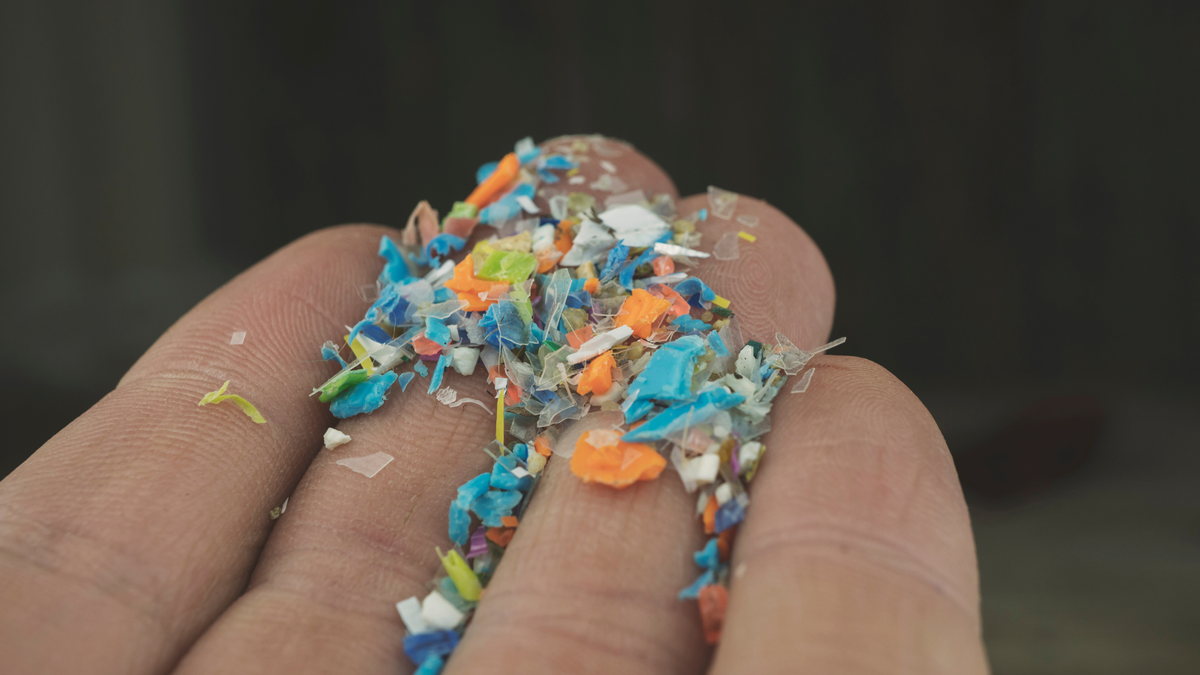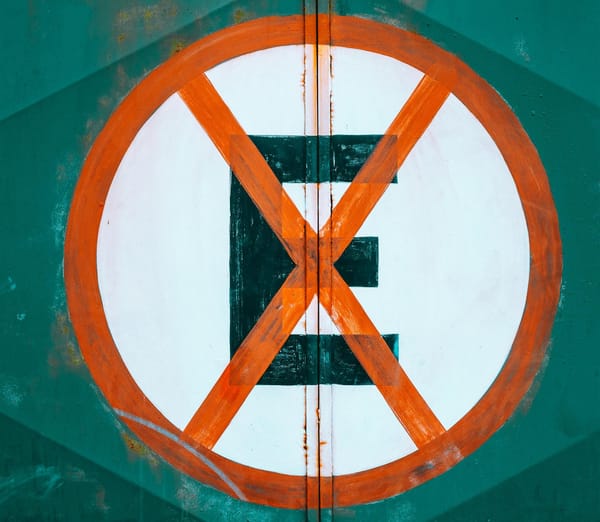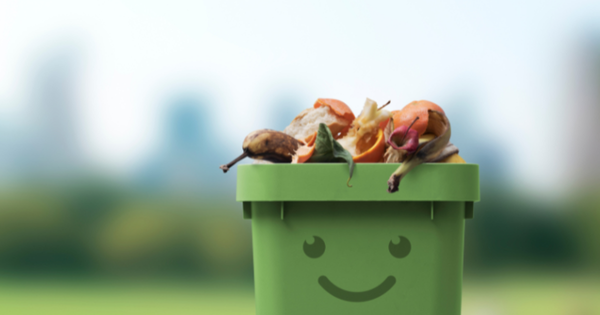Microplastics Are in Everything Everywhere All At Once
They're in our air, the clouds, our water, our food, our organs, our bloodstream and even our brains. While we wait for systemic change, here’s how to reduce your personal exposure.

Petrochemical plastics don’t break down. They break up into smaller and smaller pieces until they’re microscopic. Then, they ride the wind, hang in the clouds, fall with the rain, and move through our rivers and oceans. That’s why they’re everywhere: in our food, our water, and increasingly, in us.
It seems like new research is released every week that's discovering new health impacts of this exposure, and the early signals are troubling. Microplastics, and even smaller nanoplastics, are showing up in human organs, including the brain. Their jagged edges inflame tissues. Their chemical payload disrupts hormones. And their presence is quietly rewriting the way we understand environmental risk, public health, and corporate accountability.
To be clear, we don’t yet have all the data. But we have enough to know this isn’t sustainable for human health or for the planet.
The anatomy of a crisis
Microplastics are tiny fragments of plastic less than 5mm in size. Nanoplastics are even smaller—measured in billionths of a meter. They originate from larger plastic products that fragment over time, often due to heat, sunlight, friction and mechanical stress. These particles don’t disappear. They accumulate. And they move through ecosystems, food chains, and now, our bodies.
The scale of the problem is staggering:
- 16,000 different chemicals are used in plastic production—yet only 6% are regulated.
- 1.4 new plastic chemicals are developed every minute.
- Plastic production is set to triple by 2060, with waste volumes rising just as fast.
Recycling, far from being a solution, often exacerbates the problem—reprocessing plastics can actually increase the concentration of toxic additives in recycled material and shed more microplastics than virgin plastics due to weaker polymer chains.
A growing body of evidence of harm
A recent study in the New England Journal of Medicine linked micro- and nanoplastics found in arterial plaque to increased risk of heart attack, stroke, and death. While the data doesn’t yet prove causality, it is the first study to make such a strong association between plastic particles inside the human body and cardiovascular disease.
Another research team at the University of New Mexico examined tissue from 30 deceased organ donors. They found five times more plastic particles in brain tissue than in the liver or kidneys. Why? Because nanoplastics are small enough to pass through the blood-brain barrier, a membrane designed to protect our brains from toxins. It can’t detect them. So they slip through.

According to F. Perry Wilson, MD at Yale, if you added up the nanoplastics in a single human brain, you’d have about a sandwich bag's worth of plastic lodged inside someone’s cortex.

The implications are disturbing.
These particles are:
- Inflammatory, due to their jagged edges
- Chemical carriers, transporting toxic additives like PFAS, phthalates, and other endocrine disruptors directly into human tissues.
- Persistent, resisting breakdown and accumulating over time.
PFAS, often called “forever chemicals,” are especially concerning. When combined with microplastics, their toxicity is amplified, creating chemical cocktails that the human body is ill-equipped to process or eliminate.
Given how long plastic has been a part of modern life, there’s no clear baseline to compare to. That’s a data gap with dangerous implications. So we still need more research to draw hard causal lines between plastic exposure and specific diseases, like cancer, fertility issues, cognitive decline, and even birth defects.
How plastic gets into us
We don’t need to eat plastic to be affected by it.
Here’s how micro- and nanoplastics enter our bodies:
- Ingestion: Through bottled water, seafood, and packaged food.
- Inhalation: From airborne microplastics in household dust or industrial emissions.
- Absorption: Via cosmetics, skincare products, and clothing fibers.

It can come as a shock when you realise how much of the stuff in our lives is made with plastic:
🥫Tinned food, soft drinks and beer cans are lined with plastic
🛌 Most bedding, pillowcases and sheets will have polyester woven through them👚Many clothes are made from or with plastic fibres
🚗 Car tires are now made from synthetic rubber
🍃 Tea bags? Many have plastic fibres woven in!
🧃Paper containers and cartons have plastic coatings
☕️The cardboard of your takeaway coffee cups are lined with plastic
🍎 Even the stickers on fruit are now made from plastic
🧻 Most wet wipes contain plastic-based materials
☀️ Many sunscreens contain microplastics
💄Watch out for hidden microplastics in your favourite makeup and beauty products too
🏠 Insulation and sealants in our homes? Plastic
🎨 Adding a splash of colour to your walls? Often there's plastic lurking in there
💊 Both over-the-counter and prescription drugs may be covered with phthalate-containing plastic
🛋 Your plush lounge and carpets probably have plastic fibres through them
🏙 Fossil-fuel-based synthetic materials appear in places you never expect, like the coating on your hardwood floors or the admixture in the concrete holding up our skyscrapers.
… and so on.
We can't escape it. And it’s cumulative.
The other disturbing finding? The levels increased from 2016 to 2024. In fact, in a remarkable bit of unintentional health equity, there were no differences in plastic concentrations between men and women, between people of different races, or even by age. The only factor significantly correlated with how much plastic was in your brain was the year you died. More recently? More plastic. F. Perry Wilson
What you can do right now to reduce your personal intake of microplastics
You can’t eliminate microplastic exposure completely. But given that anyone who drinks most of their water via plastic bottles can ingest an extra 90,000 particles of microplastics a year, compared to 4,000 who consume only tap water, you can significantly reduce your personal intake by focusing on food and beverage consumption.
Especially where heat is involved.
Any kind of heating or heat stress—whether from microwaving, dishwashing, or leaving containers in a hot car—can accelerate the breakdown of plastic and release significantly more microplastics into the food or beverage you're consuming.
Here’s a short, practical list of high-impact changes:
✅ Drink water from glass or metal instead of plastic: Plastic water bottles can leach microplastics, especially when stored in heat. Tap water (filtered if needed) is generally far safer.
✅ Carry a metal or glass coffee keep cup: Sorry, but even cardboard disposable coffee cups are toxic. Most disposable coffee cups have a thin plastic lining inside the cup that discharges chemicals and tens of thousands of microplastics once steeped in boiling hot water for 15 minutes.
✅ Use ceramic or stainless steel dishware: Single-use plastics or even reusable plastic containers can shed microplastics over time, especially when scratched or worn.
✅ Store food in glass or stainless steel: Ditch the plastic Tupperware. Opt for materials that don’t break down or leach chemicals into your food.
✅ Wear and purchase natural fibres: As mentioned above, you would be surprised how much of your clothing, linen, carpets and soft furnishings are plastic or contain a percentage of plastic in their blend. Seek out 100% natural fibres where possible.
✅ Never microwave food in plastic containers: Microwaving plastic can shed millions of microplastics in seconds. Heat accelerates the breakdown of polymers and the release of additives.
These changes may seem small, but they reduce your direct exposure and signal demand for better materials. Personal action alone won’t fix systemic issues, but it’s a start, and it builds the cultural and market momentum for broader change.
What comes next?
We don't need more studies to tell us that plastic in our frontal cortex is bad, and we don't need further evidence that we should turn plastic off at the tap.
But the science is catching up to what we have all suspected for years: plastic doesn’t belong in our organs, our brains, or our bloodstream. And yet, our economy is designed to increase plastic production, not reduce it.
We don’t need more evidence to act.
We need systems change, and if you would like to explore what that looks like, you can browse some of the previous posts on this site and check out the ones that stand out to you.
We need leadership, regulation, and a serious reckoning with plastic's toxic legacy. That means rethinking how we design, use, and dispose of materials across every industry—from packaging to fashion to food.
Is it too late?
Are we too late to stop the potentially harmful effects of microplastics? I don’t think so. Like climate change, it’s never too late to avoid the worst outcomes. The best time to turn the tide was 30 years ago. The next best time is now.
More people are waking up to the problem. A 2024 survey found that over four in five people are concerned about the presence of microplastics.
The most important thing we can do is shift our habits. Avoid plastic where you can. Support brands offering better alternatives. These decisions send a signal to markets, brands, manufacturers, and policymakers.
From there, we need to push further. Stay informed about upcoming regulations. Write to your local MP. Support tougher packaging laws, Extended Producer Responsibility (EPR) legislation, and bans on unnecessary single-use plastics.
And most importantly, stay informed (by subscribing to newsletters like What’s The Matter).
As more people, brands, and politicians pay attention, I’m cautiously optimistic that change is coming. But we can't delay any longer. We have to start turning plastic off at the tap 🚰





